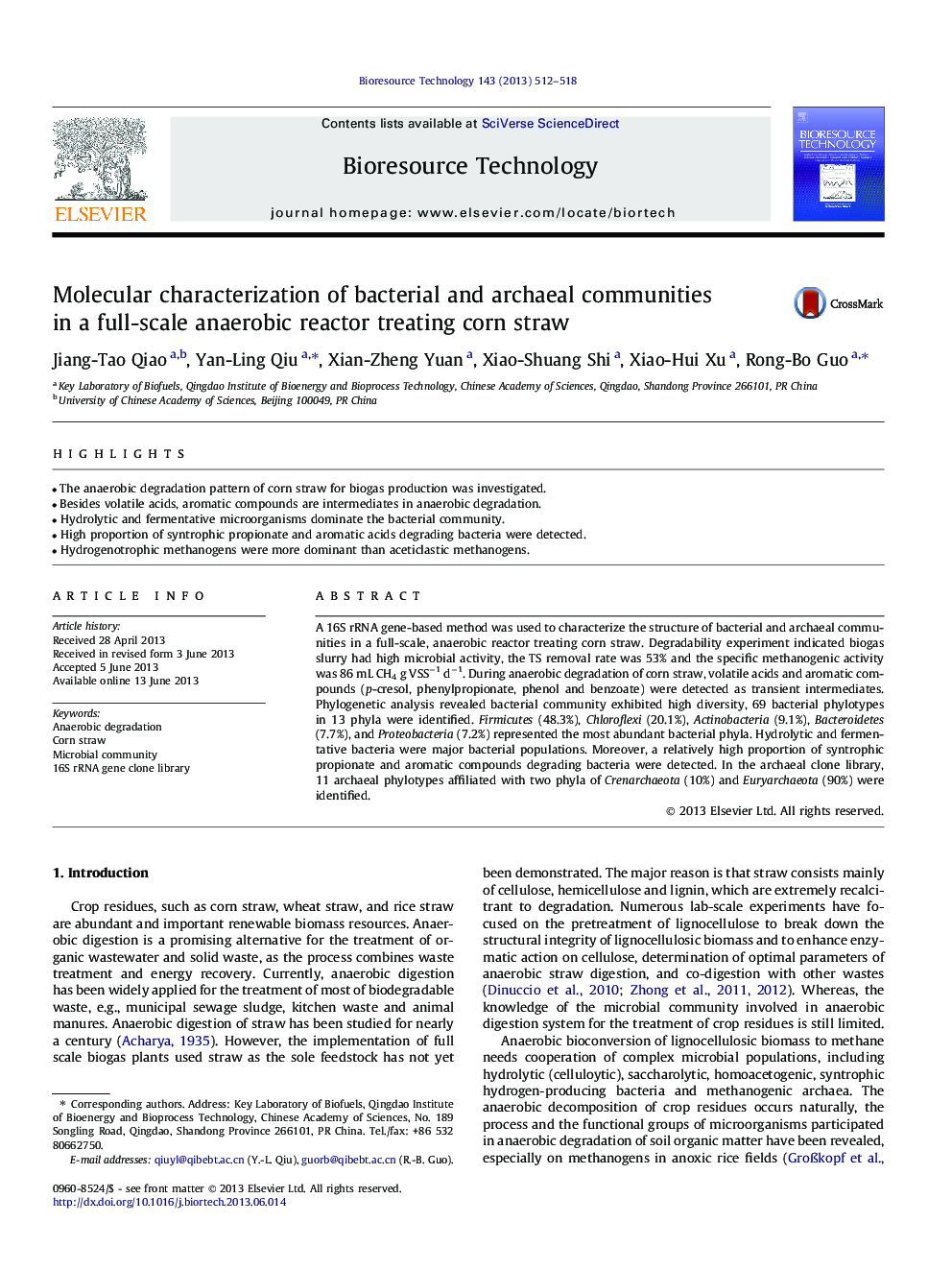| Article ID | Journal | Published Year | Pages | File Type |
|---|---|---|---|---|
| 7081271 | Bioresource Technology | 2013 | 7 Pages |
Abstract
A 16S rRNA gene-based method was used to characterize the structure of bacterial and archaeal communities in a full-scale, anaerobic reactor treating corn straw. Degradability experiment indicated biogas slurry had high microbial activity, the TS removal rate was 53% and the specific methanogenic activity was 86 mL CH4 g VSSâ1 dâ1. During anaerobic degradation of corn straw, volatile acids and aromatic compounds (p-cresol, phenylpropionate, phenol and benzoate) were detected as transient intermediates. Phylogenetic analysis revealed bacterial community exhibited high diversity, 69 bacterial phylotypes in 13 phyla were identified. Firmicutes (48.3%), Chloroflexi (20.1%), Actinobacteria (9.1%), Bacteroidetes (7.7%), and Proteobacteria (7.2%) represented the most abundant bacterial phyla. Hydrolytic and fermentative bacteria were major bacterial populations. Moreover, a relatively high proportion of syntrophic propionate and aromatic compounds degrading bacteria were detected. In the archaeal clone library, 11 archaeal phylotypes affiliated with two phyla of Crenarchaeota (10%) and Euryarchaeota (90%) were identified.
Related Topics
Physical Sciences and Engineering
Chemical Engineering
Process Chemistry and Technology
Authors
Jiang-Tao Qiao, Yan-Ling Qiu, Xian-Zheng Yuan, Xiao-Shuang Shi, Xiao-Hui Xu, Rong-Bo Guo,
